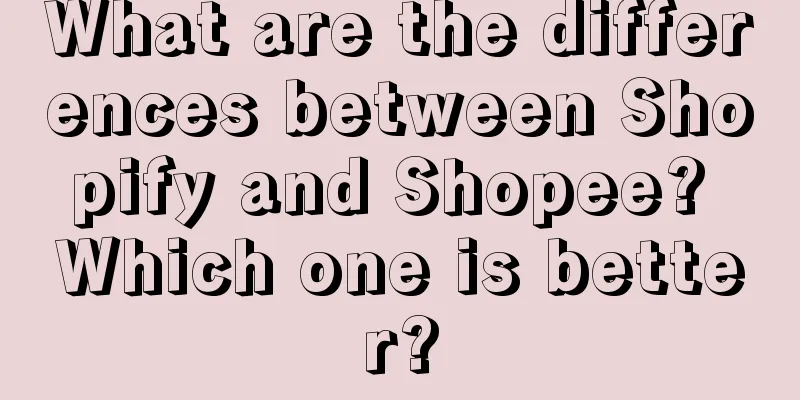Light IP, a complete guide from development to operation (Part 1)

First, let’s talk about what is light IP? This is a classification method that has become increasingly popular in the past year, dividing IP into heavy IP and light IP. Heavy IP refers to film and television animations with complete and long stories, or large-scale games with complete world views and rich characters, etc. Various film and television dramas, animated feature films, and animated series from Hollywood/Disney/Netflix, and various large-scale games from World of Warcraft to League of Legends are all representatives of heavy IP. Light IP is much more extensive and can be divided into three categories: First, there is fragmented content. IP images that are spread through fragmented information such as emoticons, short videos, comics, and MEME images can be called light IPs. Another major category of light IPs is the figurative designs or toy images designed by artists, designers, etc., which usually use rich designs as the main content carrier. Another major category is the various mascots and cartoon endorsements created by brands, namely brand IPs, which often appear in various marketing activities such as commercials, product packaging, and public relations activities. In a nutshell, the key to the success of a light IP is how to create a distinctive IP image. Here are three questions to ask yourself:
1 is a creative issue, 2 is a promotion issue, and 3 is an operational issue. These three soul-searching questions constitute a complete closed loop for the development of light IP. Below, I have compiled a simple and complete guide to light IP, including how to incubate, how to promote, how to operate and make money, to answer these three questions. This is a summary of my careful observation of the successes and failures of nearly 100 light IPs over the past month. I also conducted in-depth interviews and visits to the best and most profitable light IP operating companies in China, and gained a lot of valuable insights, which will be reflected in the following text. There are ten key points in total , let’s go into detail one by one: 1. How to make IP popular?1. Determine the role positioning of the light IP imageAn often overlooked issue is that IP image is not just an image, but a character . And a character is not just a story character (so there must be a story setting), but also an emotional relationship with people and a way of connecting with their hearts. For example, the light IP "Xiao Lan and His Friends" which has been very popular in recent years, the character of Xiao Lan can make people put themselves into the character and form a psychological resonance of "this is me". For example, the representatives among virtual digital people: IMMA overseas, AYAYI and Ling in China, etc., have the temperament of fashion icons. They do not let people put themselves in their shoes, but represent an idealized appearance. For another example, the recently very popular "milk dragon" baby. The reason why people like it is not because of self-identification or as an idol, but because the "milk dragon" fits the characteristics of a pet companion very well, and people like it like a pet. The above three are exactly the three major role positionings of IP image: Self-substitution type, idol type, and pet companion type. They represent the three types of relationships between people and IP images: "This is me", "This is my ideal or dream", and "This is my pet companion". So, you might as well examine the IP image you are currently working on or preparing to work on. What kind of role is it positioned in? This is a very critical genetic issue that determines almost all of the future development of the IP. If you are creating a self-insertion type of work, you might as well lower your posture a bit, be more approachable, and try to make the readers feel that they are above the IP character, forming a 45-degree angle. This will make it easier to empathize and resonate. Basically, most Internet celebrity images are of the self-insertion type. If you are an idol, then you need to be very cool and tall, forming a 45-degree elevation angle, and have a strong potential energy endorsement. For example, a fashionable idol must be supported by a strong fashion force, and a two-dimensional idol must be supported by elements of the spiritual source of the two-dimensional world, such as Hatsune Miku, Liella, and domestic idols such as Luo Tianyi and ASOUL. If you are creating a pet companion type, then the relationship between the IP and humans is actually the relationship between the pet and the owner. In that case, you must capture the soul of the pet and understand what kind of spiritual comfort a pet companion can bring to the owner, and even what special powers it has, just like Doraemon, Pikachu or Baymax, these three are the most representative pet companion IP characters. If you don’t know what character you want to create as an IP, then there is a big problem. Your efforts may not succeed and become an IP. In short, the clearer the spiritual relationship between IP characters and people, the more powerful the IP's development path will be. 2. When designing an image, you should achieve “empathy at first sight”Empathy is the most important reason why IP images are popular. The stronger the empathy, the more popular the IP is . Therefore, a popular IP image must resonate with people's hearts emotionally. For light IP images, since they do not have the heavy content of heavy IPs, the direct empathy of the image itself is very important. It is necessary to achieve "empathy at first sight", that is, when people see this image and character for the first time, they should immediately have a vivid empathetic response in their hearts. Three years ago, we summarized the six subconscious emotional attributes that can make people empathize at first sight: cute, coquettish, cool, silly, passionate, and sad. As long as the IP image can directly express one or more of these six emotional attributes, people can feel and empathize at first sight... (see the picture below) It is very difficult for image design to produce a subconscious emotional response at first sight, but it is best to be able to do it. Because having "empathy at first sight" is a must for almost all successful IP images. HELLO KITTY and Miffy are cute at first sight, Crazy Rabbit and Little Liu Duck are sexy at first sight, Tuzki, MOLLY and My Emperor are cool at first sight, Bazhahei, Psyduck and Zhang Xiaohe are stupid at first sight, Saint Seiya and Slam Dunk are exciting at first sight, KAWS and PEPE Frog are sad at first sight. Therefore, when designing an IP image, you must draw an image that makes people empathize with it at first sight, whether it is cute, sexy, cool, silly, passionate, or sad. To achieve this, the first thing is to start from the heart, and the second is to allow the designer to give full play to his or her inner potential, and avoid imposing various requirements. 3. Content design should be “new, unique and special”Although light IP is light, it also requires a lot of effort in "content setting". And because it is light and small, the setting requirements are often much higher and more difficult than long content. The success of light IP often depends on "new, unique, and special", that is, novel and unprecedented content, unique ideas, and special personality images, in order to stand out from the crowd. It is indeed difficult to design content that is "new, unique and special". It often requires constant experimentation and trial and error to find a breakthrough. After all, only a few can become popular at each stage. Here are some commonly used methods to design something "new, strange, and unique" - the first one is to change the characteristics of the character to represent the IP: Fat Tiger, which has been very popular in recent years. For this purpose, I specially interviewed the operator behind Fat Tiger: Qi Ce Di Chu Cultural and Creative Co., Ltd., which is one of the most outstanding IP operating companies in China. Its IPs include Fat Tiger and Xiao Liu Ya. The interview with them was very rewarding. When I talk about operation and making money in the second half of the article, I will focus on introducing their experience. They told me the essence of the Fat Tiger IP: Uncle Fujima drew the Fat Tiger by treating the tiger as a cat... This is exactly what makes Fat Tiger unique. While most tigers emphasize majesty, Fat Tiger uses various cat-like gestures that are innocent, cute, humorous and moving, successfully capturing people's subconscious feelings towards pet cats. Moreover, Uncle Fujima is an uncle, so Fat Tiger naturally has the temperament of an honest uncle. Cat + uncle + tiger, this interesting combination constitutes Fat Tiger's unique cute uncle temperament. Later, a little tiger was born beside Fat Tiger, which brought out the warmth of the family and attracted many people who were a little older and had families. Their children were almost the same age as the little tiger. They had to fight like tigers in their lives and play with their children when they got home. Therefore, Fat Tiger and the little tiger gave them a strong sense of self-involvement and resonance. Therefore, the Fat Tiger IP has both the sense of a pet companion and a sense of self-immersion, which has touched a very wide range of people, including young people, pet lovers, and middle-aged uncles. The second type is to introduce different cultures to change the temperament of the content . Representative works include the Indian-style songs and dances of the recently popular self-media account "Hao Ge Bulk Songs". Presumably, readers have more or less seen Haoge's Indian-style songs and dances. In fact, the core is still something ordinary Chinese people do, but through Indian-style costumes, Indian-flavored singing, and constantly unexpected surprises in the arrangement, it has become a hit, with each post having over 100,000 views. This is also related to the high level of the content. Behind the humor and funny performance, Haoge's team's performance is very professional and of high quality. This style of introducing different cultures to create surprise is a common way for content to successfully gain popularity. Strictly speaking, Li Ziqi's works are also of this type. There is also the Fei Ren Zai comics, which interprets ancient myths and characters into the lives of modern people and students, achieving very extraordinary results. The third way is to break the conventional and inherent way of the content and interpret it with your own unique personality. There are countless cases of this kind, from Mr. Luo Xiang's unique way of explaining the law, to cast iron craftsmen making various daily necessities, to the Xinjiang Internet celebrity who said "You said the background is fake". The most representative case is the popularity of Dongfang Zhenxuan, which is also because its anchor changed the usual shopping guide anchor characteristics and aroused different feelings with the style of English teachers. The fourth way is to achieve high empathy through the most simple content. This type of case is not very new, strange, or special, but is very common in small animation content. It relies on a unique and recognizable image, coupled with very daily, bit-by-bit life trivia and feelings, to allow people to immerse themselves in it. Like Xiaolan and his friends, Xiao Liuya, and his daughter's daily life, etc., all of this type of content, the core of which is substitution, empathy, and resonance of life. The fifth type is to create super idols in the coolest and most unique way. This type is the opposite of the previous one. It does not take the route of self-substitution, but the route of super idols. From AKB48 to Hatsune Miku, this is the case. This requires a large entertainment company and a large platform to do it. Aespa, a South Korean girl group that has recently become popular, combines real female stars with digital avatars and creates a metaverse-like worldview. When new songs and albums are released, they are always accompanied by sci-fi imaginative stories and short films, which makes Aespa seem to exist in both the real and digital worlds at the same time. Each song and album is both a pop song and a puzzle exploring the digital fantasy world. As mentioned earlier, creating an idol IP is very different from creating a popular self-insertion IP. It requires strong fashion culture endorsement, various new technical means and a very high budget. 4. Long-term content is based on emotion and cultureThe third point above has been about how to create new, unique and special content, but any new, unique and special content will soon become commonplace to people, which is why it is said that any hot topic will not last more than a month. After the feeling of being new, unique and special has passed, if content and IP want to exist and be popular for a long time, they need to have long-term empathy and create their own cultural value. What will ultimately succeed must be the emotional and cultural power of IP, and its ability to empower things. The following figure shows the eight types of content emotional positioning that IP Fried Rice has sorted out for long-term development: The cute style often features super cute characters as the protagonists, and tells some simple, heartwarming and healing stories. The sweet style and the cute style have many similarities, but the protagonist is a couple, describing the sweet and playful life of the couple. The cold style is often aloof, also called the cool style. It is not necessarily the story content, but the songs, MVs or fashion shows. Creating a super idol IP is often the cold style. The burning style is a symbol of youthfulness and needs to be supported by content and a large amount of performing arts, singing and dancing. The Superman series is about creating superheroes, which requires strong content support. It is not necessarily a light IP, but often a heavy IP. The most common designs of sad-themed designs are those of trendy artists, such as KAWS. They can also start as emoticons and MEMEs, such as PEPE the sad frog. Perhaps for the purpose of emotional venting, sad-themed emoticons have always been very popular. The world's two major mourning IP representatives The mean style and the sad style have many similarities, and are also very popular in emoticons and MEMEs, and can also be made into small comics. The only difference is that the outlook on life is not dark, but mean, which makes people feel more self-immersive. The sand sculpture style is silly and is also very popular in emoticons, MEMEs and comics. Also, comedy masters are often of the sand sculpture style, such as Chaplin and Mr. Bean. Among these eight types of content emotional positioning, the cute and sweet types can be collectively referred to as the cute pet type or the healing type , the cold type can also be called the fashion type , the passionate type and the superman type can be collectively referred to as the hero type , and the sad type, the mean type, and the sand sculpture type can be collectively referred to as the anti-hero type . Every image IP or content IP with long-lasting vitality occupies a certain emotional position in people's minds, and combines the current situation and cultural development to form a circle of cultural consensus. We might as well use a formula to summarize: empathy positioning + cultural consensus + current situation power = IP. To sum up, if an image or content wants to be operated in the long term and truly grow into an IP, it must establish its own empathy characteristics and subculture system. Author: Chen Gelei (Lao Xiaoge) team Source: WeChat public account "IP Fried Rice (ID: IPCOOK)" |
<<: Through Mother's Day marketing, we see the possibilities of traditional media
Recommend
The blogger who visited the store and “did not enjoy the food” attracted 2 million fans
The track for store exploration bloggers has chang...
How does Costco, with an annual fee of 60 yuan, lock in hundreds of millions of members?
As the world's second largest retailer, how di...
Marketing strategies under the trend of consumption upgrading: shifting from blindly believing in high-price positioning to enhancing value perception
As consumers’ consumption perspectives change, how...
What does eBay mean? What are the advantages of eBay?
In fact, everyone has heard a lot about the eBay p...
eBay takes protective measures for sellers affected by rail network disruption
eBay Australia recently announced that due to floo...
How about doing cross-border e-commerce at home? Is it easy?
Many domestic sellers will find a good team before...
Young people who can’t make money love to spend money on a sense of ceremony
"Getting free stuff" and "spending ...
Marketing to the left, branding to the right
What new changes will happen to marketing in 2023?...
618 sales start, Alibaba cancels e-commerce "pre-sale" for the first time
This year's 618 promotion has kicked off. This...
How many points will Shopee deduct before being frozen? Is there still a chance after being frozen?
Shopee platform, like other platforms, actually ha...
Yue Yunpeng and Yu Qian lead the new trend of advertising endorsements: say goodbye to traffic and embrace stories
Yue Yunpeng shot a commercial for Apple, Yu Qian c...
Xiaohongshu’s strategy to break the brand circle
How can brands break through the circle on Xiaohon...
What should I do if I haven't graduated from Shopee? What are the consequences?
Shopee is a good platform in many people's min...
Will the next popular tourist city be discovered by young people themselves?
Nowadays, there are many tourist cities, but how d...
The bad news about 618: low prices “failed” and platforms “took detours”
During this year’s 618, all major platforms have t...









